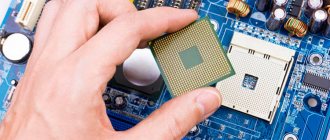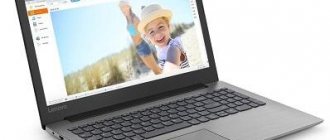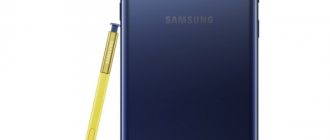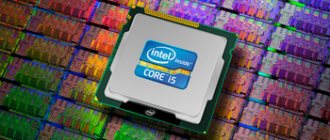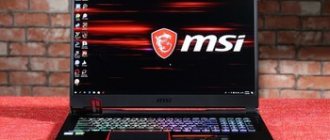AMD Ryzen 5 2600
- Socket: AM4
- Architecture: Pinnacle Ridge
- Lithography: 12 nm
- Number of cores: 6
- Number of threads: 12
- Base clock: 3.4 GHz
- Turbo clock speed: 3.9 GHz
- Free multiplier: yes
- Integrated graphics: no
- TDP: 65 W
Ryzen five, based on the Pinnacle Ridge architecture, is still the people's processor. The scope of application is wide. With an average retail price of ten thousand rubles, this six-core stone can become the basis in different configurations. A productive workstation, an inexpensive gaming computer – you never know the options.
At the same time, the number of the passport TDP does not exceed sixty-five watts without overclocking. And I'm talking about a processor now that has SMT multi-threaded technology enabled, which essentially doubles the number of cores. Surprisingly, this result was achieved simply by switching to a twelve-nanometer process technology.
Two thousand six hundred is a pretty quick guy. Its base frequencies lie within three and a half thousand megahertz. This is higher than the previous incarnation of the fifth “Rizen”. And compared to its predecessor, the number of operations per cycle has also been increased.
Overall, the Zen Plus processor is by far the best choice of the available options. The only thing we can blame it for is its weak overclocking potential. Stable operation in manual mode can be achieved at a frequency only one hundred megahertz higher than that stated as the limit according to the passport.
What you need to know about APU
- Clock speed is the raw speed of the processor, measured in GHz. As noted above, all of these APUs are based on the Zen architecture, which is great due to its strong single-core performance; this is especially useful for games.
- Kernels . The more cores, the better the processor will perform at multitasking and applications that use multiple cores. Games use a single core more intensively, and when creating a lot of content, the emphasis is on multiple cores.
- Threads can be thought of as additional virtual cores. For example, a processor has only one physical core. However, it acts as two cores when processing tasks and processes.
- Graphics refers to "GPU" integration. In this case, the hierarchy starts with Vega 8 on the budget APU and ends with Vega 11 at the highest level, for now.
Ryzen 5 3400G
- Socket: AM4
- Architecture: Picasso
- Lithography: 12 nm
- Number of cores: 4
- Number of threads: 8
- Base clock frequency: 3.7 GHz
- Turbo clock speed: 4.2 GHz
- Free multiplier: yes
- Integrated graphics: yes
- TDP: 65 W
The next processor in my top is a rather uncharacteristic solution for Zen architecture. Model number three thousand four hundred with integrated graphics with index G is a suitable solution for budget gaming systems.
In fact, the senior desktop CPU from the Piccaso family is an analogue of the Ryzen mobile processors from the 3,000 series. But its characteristics will still be better. However, Renoir, which is also designed for laptops, still made them.
The Ryzen 5 3400G processor, like other APUs that Advanced Micro Device puts on the market, is noticeably different in its architecture from other desktop solutions. The processor crystal is monolithic - there are no CCD chiplets here, and all the cores are enclosed in one complex, so their maximum number is limited to four. This structure shows excellent efficiency when working with third-level cache memory. True, the size of L3 is limited here - only four megabytes.
Thus, AMD managed to make a decent processor with integrated graphics, which, all other things being equal, is unlikely to have an analogue in Intel’s camp.
Which AMD processor is best to buy in 2021?
Choosing an AMD processor for your home computer doesn't have to be a difficult task. If you're short on money, but want to buy a decent processor, pay attention to the interesting AMD Ryzen 3 2200G model. Perhaps you are not chasing modern trends and are not puzzled by the issue of regular upgrades? Buy any of the 8-core options in the FX line - they are still relevant in our time.
If you have an amount of about 8,000 rubles, you should take a closer look at a high-performance processor with an excellent cooler, the Ryzen 5 1600 BOX, and if you spend a little more, you can buy the Ryzen 5 2600X with support for auto-overclocking technologies. For maximum gaming comfort, you should go for the Ryzen 7 2700X. And the true object of admiration for enthusiasts and maximalists will be the AMD Threadripper 2950X - the best AMD processor from the HighEndDesktop category.
Ryzen 7 2700X
- Socket: AM4
- Architecture: Pinnacle Ridge
- Lithography: 12 nm
- Number of cores: 8
- Number of threads: 16
- Base clock frequency: 3.7 GHz
- Turbo clock speed: 4.3 GHz
- Free multiplier: yes
- Integrated graphics: no
- TDP: 105 W
And since I talked about the six-core Pinnacle Ridge, it’s worth mentioning the older AMD processor based on this architecture. At one time, Ryzen 7 number two thousand seven hundred with the index “X” was perceived as a work on the errors of the first generation Zen. That is why a modest “plus” sign was added to the name of the family.
However, from the heights of two thousand and twenty, when we can already see the five thousandth series of “Ryzens”, an eight-core processor with sixteen threads can be called a separate step in the development of microchips. Judge for yourself, in the second generation the technical process was changed from fourteen to twelve nanometers, which made it possible to slightly reduce the area of the transistor crystal and qualitatively increase performance along with a decrease in leakage currents. In addition, it was in the second generation that AMD introduced new algorithms for boosting frequencies. Let me remind you that it was for Zen plus that Precision Boost version 2 was developed and at the same time Extended Frequency Range 2 was introduced.
All this together gave a significant increase in the overall performance of processors. So the “two thousand seven hundred X” model, on average, under load, operates at a frequency of about four gigahertz. Which is noticeably more than the previous older Ryzen.
In the end, the result was a very good processor that remains relevant to this day. If you use a good cooling system, then the seventh Ryzen will show itself in all its glory.
Laptops priced from 20 to 25 thousand rubles
Not an extra five thousand rubles can be spent in different ways. Some will opt for a medium configuration, preferring a good matrix or a compact size. For the rest of you who care about processor performance, we'll tell you what to expect from them.
Our list opens with a full-fledged Pentium N4200 from Intel with dual-channel memory from the Apollo Lake family (2016). We have already met its younger brother Celeron N3350. The difference between them is a slightly higher turbo frequency and four cores instead of two. The platform is fresh, although it is based on 14 nm.
Processors with the letter “U” at the end belong to three generations at once (Haswell, Broadwell, SkyLake). The oldest, so to speak, is the Intel Pentium 3556U with Haswell architecture. It does not have the lowest operating frequency - 1.7 GHz without turbo mode, but it is made using a 22 nm process technology and is adjacent to DDR3 memory, more precisely, its energy-efficient version LDDR3, operating at a voltage of 1.35 V.
A step higher are processors based on the Broadwell architecture. Here you have an advanced 14 nm process technology and the presence of the Hyper Threading function in some copies. Thanks to it, the number of executable threads in the system increases from two to four, although the processors are still physically equipped with two cores.
The younger CPUs Intel Celeron 3215U and Intel Celeron 3205U differ in operating frequency (1.7 GHz versus 1.5 GHz), and the rest of the characteristics are absolutely the same: two cores, 2 MB of cache memory, power consumption up to 15 W and support for LDDR3 memory. frequency up to 1600 MHz. Again, returning to the importance of not the amount of memory, but its channels, all of the listed processors use two memory channels. This is a physical capability of processors, but not all manufacturers use this feature, often providing laptops with four or eight gigabytes of RAM on one channel.
The Intel Pentium 3825U and 3805U are also very similar except for one important fact: the 3825U has Hyper Threading support, the 3805U does not. Both operate at 1.9 GHz without turbo modes with memory up to 1600 MHz.
And finally, the last representative of the Broadwell processors is the Intel Core i3-5005U. Despite belonging to the i3 series, it has few differences from the Pentium 3825U. Firstly, the frequency has risen to 2 GHz. Secondly, the cache memory size has been increased from 2 to 3 MB and... that's it. Is it worth paying extra for this, obviously not, since there are a couple of SkyLake processors in the neighborhood.
The Intel Pentium 4405U is close in characteristics to the Pentium 3825U, but operates at a frequency of 2.1 GHz. However, the frequency is not particularly important here, because It’s worth paying attention to this aspect: SkyLake received a new controller that is compatible with two types of memory at once - DDR4 and LPDDR3. Depending on the honesty of the manufacturer, a laptop may have one type or another. Naturally, with DDR4 the performance will be slightly higher, and this is worth taking into account. But even with LDDR3, SkyLake has an advantage over Broadwell due to a higher operating frequency - 1866 MHz instead of 1600 MHz.
The Intel Core i3-6006U should formally be better than the Pentium 4405U in all respects, but upon closer examination its frequency turns out to be 100 MHz lower. Even with an increased amount of memory, it is not able to compete with the Pentium 4405U. Once again, the type of memory used will be a deciding factor in your choice.
AMD
In response to the booming budget laptop sector, AMD, like Intel, has some ambitions to take a piece of the pie.
Its APUs are ahead of the competitor in terms of graphics, but the same cannot be said about the computing power of the main processor cores. Although, looking ahead, a couple of APUs perform quite decently against the background of Intel processors. On the other hand, it is in this segment that you somehow come across outdated APUs that do not fit into modern reality at all. But we'll start with some really interesting samples. The AMD A9-9410 has only two cores with a dynamic range of 2.9 to 3.5 GHz. The small amount of cache memory (1 MB) is compensated by support for DDR4 memory up to 8 GB and a frequency of up to 2133 MHz, operating in dual-channel mode. This is the only processor with Excavator cores on the Stoney Ridge platform. Its graphics core, provided there is a large amount of RAM in the laptop, can compete with the simplest discrete video cards.
All of the four-core APUs listed below are older processors, but they may well satisfy the needs of an undemanding buyer. For example, AMD A8-7410 with a frequency of 2.2-2.5 GHz or AMD A6-6310 operating at frequencies of 1.8-2.4 GHz, and even AMD E2-6110 with its 1.5 GHz is capable of something . However, they all support only one memory channel and will not be able to fully unleash the potential of the integrated Radeon graphics core. And the latest AMD Brazos QC-4000 APU is like a dinosaur: not only does it have a very modest frequency potential of 1.3 GHz, and it is aimed more at tablets than laptops.
| CPU | Cores/threads | Frequency, GHz | Technical prot., nm | Energy, W | Memory (volume, frequency, channels) | Architecture | Geekbench 4 results (single/multi) |
| Intel Pentium N4200 | 4 | 1,1-2,5 | 14 | 4-6 | DDR3L LPDDR3 LPDDR4 8GB, 1600 2400 2 | Apollo Lake | 1592/4483 |
| Intel Core i3-6006U | 2/4 | 2,0 | 14 | 15 | DDR4 LPDDR3 DDR3L 32GB 2133 1866 1600 2 | Skylake | 2789/5350 |
| Intel Core i3-5005U | 2/4 | 2,0 | 14 | 15 | DDR3L LPDDR 16GB 1600 2 | Broadwell | 2619/4880 |
| Intel Pentium 4405U | 2/4 | 2,1 | 14 | 15 | DDR4 LPDDR3 32GB 2133 1866 2 | Skylake | 2536/4997 |
| Intel Pentium 3825U | 2/4 | 1,9 | 14 | 15 | DDR3L LPDDR 16GB 1600 2 | Broadwell | 2247/4119 |
| Intel Pentium 3805U | 2 | 1,9 | 14 | 15 | DDR3L LPDDR 16GB 1600 2 | Broadwell | 2205/3619 |
| Intel Pentium 3556U | 2 | 1,7 | 22 | 15 | DDR3L LPDDR3 16GB 1600 2 | Haswell | 1937/3265 |
| Intel Celeron 3215U | 2 | 1,7 | 14 | 15 | DDR3L LPDDR 16GB 1600 2 | Broadwell | 1955/3158 |
| Intel Celeron 3205U | 2 | 1,5 | 14 | 15 | DDR3L LPDDR 16GB 1600 2 | Broadwell | 1811/3014 |
| AMD A9-9410 | 2 | 2,9-3,5 | 28 | 15 | DDR4 8GB 2133 2 | Excavator Stoney Ridge | 2278/3485 |
| AMD A8-7410 | 4 | 2,2-2,5 | 28 | 15 | DDR3L 8GB 1866 1 | Puma+ Carrizo-L | 1352/3715 |
| AMD A6-6310 | 4 | 1,8-2,4 | 28 | 15 | DDR3L 8GB 1866 1 | Puma Beema | 1335/3401 |
| AMD E2-6110 | 4 | 1,5 | 28 | 15 | DDR3L 8GB 1600 1 | Puma Beema | 911/2505 |
| AMD Brazos QC-4000 | 4 | 1,3 | 28 | 15 | DDR3L 8GB 1600 1 | Jaguar Kabini | 854/2359 |
AMD Ryzen 5 3600
- Socket: AM4
- Architecture: Matisse
- Lithography: 7 nm
- Number of cores: 6
- Number of threads: 12
- Base clock frequency: 3.6 GHz
- Turbo clock speed: 4.2 GHz
- Free multiplier: yes
- Integrated graphics: no
- TDP: 65 W
And again we are trampling around the six-core Ryzen. But now this is a matured Zen plus, which was assigned the second number. The “three-six hundred” model bore the title of “national” until it rose in price. But this is still one of the best processors in the "universal choice" rank. Still would! Six cores, each with two threads, provide excellent performance in any situation.
Architecturally, this six-core processor has surpassed its predecessor. Seven nanometers versus twelve according to the TSMC process technology. Thin crystals made it possible to increase frequencies and overall performance while maintaining the same power consumption and heat dissipation.
In addition, compared to the previously mentioned Ryzen two thousand six hundred, the younger version has a significantly larger third-level cache. Naturally, thanks to the reduction in size. Chiplets from AMD boast thirty-two megabytes of L3, since there is enough space on the substrate for an additional block of transistors.
I believe that in gaming builds, the CPU from Advanced Micro Device competes well with similar processors from Intel.
What is an APU processor
While an accelerated processor is a very attractive name, make no mistake: an APU is just a combination of a CPU and a GPU . For example, many Intel processors that use integrated graphics are essentially the same as APUs. However, their graphics chips are much less powerful than those found in these Ryzen APUs.
Note: You can also use them strictly as a CPU by adding a dedicated GPU (video card) to your build.
A similar concept can be found in other industries called "SoC". SoC stands for "System on Chip" and they typically combine all the components of a system into one "chip". This is common in gaming consoles (PS4 and Xbox One use AMD SoCs, for example), smartphones, and sometimes laptops.
What about Ryzen mobile APUs?
If you follow tech news, you may know that AMD recently announced the Ryzen APU for gaming laptops. At the time of writing, they have not yet been released, but in all likelihood, they are unlikely to surpass the Ryzen desktop APUs.
Even if they were available, they cannot be purchased individually and are therefore beyond the scope of this article. But if you want to know more about them when they come out, let us know in the comments below!
AMD Ryzen 5 3600XT Processor
- Socket: AM4
- Architecture: Matisse
- Lithography: 7 nm
- Number of cores: 6
- Number of threads: 12
- Base clock frequency: 3.8 GHz
- Turbo clock speed: 4.5 GHz
- Free multiplier: yes
- Integrated graphics: no
- TDP: 95 W
And the next number in our program is the improved Ryzen “three-six hundred” with the “ex-ti” index, which appeared on sale relatively recently.
Its silicon interior is made using a seven-nanometer process technology, which, however, has become more optimal. After all, TSMC, a supplier of semiconductor silicate crystals for AMD processors, worked hard in its laboratories and the silicon eventually acquired more quality compared to the beginning of production.
Improved “stones” made it possible to slightly raise the upper limit of the frequencies that the processor can handle. Which is surprising, because the new XTs are cut according to the same patterns that were used in the regular “three thousand six hundredths”. The scheme is simple: on one substrate there is a chiplet with two CPU Complexes, each of which has four cores - three of them are active, one is blocked. The third level cache is made according to the same principle of two halves of sixteen megabytes each. The Infinity Fabric bus, on which inter-core communication is organized, can operate stably at a frequency of 1900 megahertz, which limits the upper limit of RAM.
However, this data is enough to be generally recognized as the best option for assembling productive gaming systems.
Best Entry Level (Budget) AMD Processors
1AMD Ryzen 5 1600 BOX
The Ryzen 5 1600X/2600 could be placed in the first position in the segment of budget AMD processors, but the Ryzen 5 1600 BOX is more justified in terms of costs and expected power.
For less than 8,000 thousand rubles you buy a budget monster on the AM4 socket and with a third-level cache of 16 MB! The 12-thread CPU has automatic and manual overclocking capabilities. At a price almost 2 times lower, our copy shows better performance than the 8-thread analogue from Intel i7-7700K. In synthetic tests it performs even better than our favorite Core i5-9600K (described in the parallel rating of Intel processors).
pros
- Best performance for the price
- Overclocking potential
- Large cache memory
- Low heat dissipation
- Cool boxed cooler
Minuses
- No integrated graphics
- Problems noticed with game optimization
2AMD FX-8350
It seems like it will never get old.
Since the beginning of the 1990s, this “stone” has been on the market (being extremely popular) and demonstrates excellent data under multi-threaded loads. Three-dimensional modeling, professional editing, cryptographic and financial accounting applications - FX copes with all this with a bang. 4 computing modules have a nominal frequency of 4.0 GHz, which can be increased to 4.2 GHz. With aggressive overclocking you can reach 5 GHz or even higher, although it is recommended not to exceed 4.7 GHz.
The power of this CPU is approximately at the same level as that of the IntelCore i3-8300 and Core i5-7500. Even in 2021, its potential is enough to be integrated into mid-range home gaming systems.
pros
- TurboCore technology support
- An option for lovers of justified overclocking
- Handles resource-intensive tasks
- Absolutely objective price tag
Minuses
- Noisy fan
- Not the best single thread performance
3AMD Ryzen 3 2300X
This quad-core processor pleases primarily with its price, and compared to the previous generation model (1300X), it has a slightly increased turbo frequency (4 GHz) and supports the DDR4-2933 RAM standard.
The CPU does not require water cooling or a large number of heat pipes (while maintaining the thermal package at 65 W). The overclocking potential on the Zen+ microarchitecture is good - frequencies above 4 GHz can be maintained constantly, and not just in boost mode. Of course, in this case the CPU will heat up noticeably.
The model also has a direct competitor in the form of the IntelCore i3-8100 with an advantage over it in synthetic tests.
pros
- No overpayment for unused “future reserve”
- Current socket
- Unlocks the potential of powerful graphics cards
- Moderate heat dissipation
Minuses
- Almost a “copy” of 2200G
- No SMT
4AMD FX-8320
The most inexpensive solution from AMD, which can be used in games.
But not in the most resource-intensive ones. However, if you have a powerful video card, drops below 46 FPS are practically not observed. You can also use a boxed cooler for games, but if your plans include clock overclocking, you won’t be able to do without an additional cooling system. Buyers note the processor's fast performance during basic tasks and moderate heat generation. This is a very popular model with hundreds of reviews on the Internet, mostly positive. A direct competitor in terms of characteristics can be considered the IntelCore i3-8100, which costs 3 times more.
pros
- Best price/performance ratio
- Cheap mat. CPU boards
- Overclocking potential
- Speed in Parallel Computing
Minuses
- Gets very hot when handled
- High energy consumption
AMD Ryzen 7 3700X Processor
- Socket: AM4
- Architecture: Matisse
- Lithography: 7 nm
- Number of cores: 8
- Number of threads: 16
- Base clock frequency: 3.6 GHz
- Turbo clock speed: 4.4 GHz
- Free multiplier: yes
- Integrated graphics: no
- TDP: 65 W
The same structure with two CCXs is also observed in the xed Ryzen 7. And here there are no more disabled cores - all eight work as expected. At the same time, the standard TDP remains the same low - sixty-five watts.
Of course, provided there is a suitable power supply, the thermal package will be significantly larger. All nuclear complexes with Zen 2 architecture are capable of self-overclocking, thanks to Precision Boost technology. Under load, the processor frequency limit rises to four and a half gigahertz, thanks to proprietary AMD technology.
Such achievements were made possible thanks to a new seven-nanometer process technology. The smaller the crystal, the more free space remains. So the problem of distant nuclei located in different complexes that weakly interacted with each other was, for the most part, solved. The Infinity Fabric bus, over which different CCXs communicated with each other, was expanded to five hundred and twelve bits, and this helped.
In general, the three thousandth series has a significantly larger number of operations per clock cycle, which is why they are faster than their predecessors. The third level cache became twice as large, which also affected performance. And finally, improvements have also been made to the firmware code, which has become qualitatively better in the algorithmization of actions.
All these improvements are clearly visible in the Ryzen 7 processor, so it is a welcome guest in any configuration that requires the presence of an eight-core processor.
AMD Ryzen 9 3900X Processor
- Socket: AM4
- Architecture: Matisse
- Lithography: 7 nm
- Number of cores: 12
- Number of threads: 24
- Base clock frequency: 3.8 GHz
- Turbo clock speed: 4.6 GHz
- Free multiplier: yes
- Integrated graphics: no
- TDP: 105 W
The twelve-core processor, which AMD introduced to the world in two thousand and nineteen, caused quite a stir. This power would be comparable to the HEDT class, and not to the Desktop level. Surprisingly, such a high-performance solution fits into a 105-watt thermal package. And the ninth “Ryzen” with Zen 2 architecture firmly secured the title of king of user systems.
Of course, this did not happen by chance. I will again remind you about the seven-nanometer technical process, which significantly reduced the size of silicon crystals and, accordingly, the TDP dropped. Thanks to the small footprint of the Zen 2 processor architecture, it became possible to place a pair of eight-core CCD chiplets while remaining within the AM4 socket.
Previously, we could only see twelve cores on Threadripper. Now we see four nuclear complexes in action, with four nuclei in each. True, only three of these cores work. But this, I believe, is not a loss at all. Ultimately, users have a processor that is equal in performance to Threadripper for relatively reasonable money.
Laptops priced from 15 to 20 thousand rubles
Usually, as the cost of laptops increases, manufacturers try to supply CPUs from a higher model line. It turns out that in the real world everything is not quite like that, and last year’s models coexist quite peacefully with laptops from the current year’s lineup. Therefore, once again we warn inattentive buyers: even in the more expensive segment there are models with previously described processors. And new ones are added to them, which are not always faster and better than the old ones.
Intel
The list opens with a trio of Intel Pentium processors with numbers N3540, N3700 and N3710. The first refers to the Bay Trail platform (2013), the others to Braswell (2015).
It only makes sense to choose Braswell if you want to get a processor made using 14 nm technology with lower power consumption (4-6 W instead of 4.5-7.5 W). As a result, the heating and noise of the cooling system are reduced. It is not possible to talk about the striking superiority of one over the other because the characteristics are too similar. All have four cores, 2 MB of cache memory, and frequencies vary in the ranges of 2.16 - 2.66 GHz for the N3540, 1.60 - 2.40 for the N3700 and 1.60 - 2.56 for the N3710. Braswell processors support DDR3 memory at 1600 MHz, while Bay Trail is limited to 1333 MHz. And the first significant difference is dual-channel memory in all of the described processors.
Among Pentiums, there are CPUs with the index U in the name - these are the Intel Pentium 3558U and Intel Celeron 2957U. Both processors come from the desktop world with Haswell architecture. Despite the difference in name, Celeron and Pentium, in fact, both have only two processing cores, 2 MB of cache memory and power consumption of 15 W. The only difference between them is the frequency of operation. Intel Celeron 2957U operates at a frequency of 1.40 GHz without turbo mode, Intel Pentium 3558U - 1.70 GHz also without boost. Depending on the wishes of the laptop manufacturer, a system with these processors can have up to 16 GB of normal DDR3 1600 MHz SoDimm memory with dual-channel mode. It turns out that these processors are the closest to desktop systems and offer maximum opportunities for improving the performance of a laptop.
AMD
A large list of AMD APUs falls into the range between 15 and 20 thousand rubles, ranging from the affordable and primitive AMD E1-6015 CPU to the decent AMD A6-9210 model.
And the full list includes as many as six AMD APU models: A6-9210, A6-7310, A4-7210, A4-6210, E2-7110, E1-6015. The E1-6015 is a slightly overclocked version of the E1-6010 APU. The frequency has increased from 1.35 GHz to 1.40 GHz.
The E2-7110 is the same E1-6015, but with a frequency of 1.80 GHz, four processing cores and a 2 MB cache instead of 1 MB. Naturally, an increase in the number of cores should have affected power consumption, but the improved technologies implemented in the APU allowed it to remain in the range of 12 to 15 W. Unfortunately, the single-channel memory controller still holds back the integrated Radeon R2 graphics.
A4-6210, A4-7210 and A6-7310 are twin processors. Close standard frequencies (A4-6210 -1.8 GHz, A4-7210 - 1.8...2.2 GHz, A6-7310 - 2.0...2.4 GHz), 2 MB cache memory for each, 15 W power consumption, single-channel DDR3L memory with a frequency of up to 1600 MHz for the first two and up to 1866 MHz for the last APU. By and large, the main difference lies in the graphics core. The A4-6210, A4-7210 have Radeon R3 (128 unified processors each with a frequency of 600 MHz for the first and 686 MHz for the second APU), and the A6-7310 Radeon R4 (the R4 index indicates a GPU frequency of 800 MHz, and not an increase actuators, no matter how logical it might be). However, the problem here is the same - limited memory bandwidth. And in the end, whether Radeon R3 or R4, the difference on the screen is hardly visible to the naked eye.
A6-9210 – AMD seventh generation APU with two Excavator cores. Reducing the quantity and increasing the number in the name is a favorite technique of manufacturers. Although it all depends on which side you look at it from. Indeed, the number of cores has decreased, and this has a negative impact on performance. On the other hand, AMD decided to balance the CPU with advanced Radeon R4 graphics (192 stream processors at 600 MHz). Ultimately, the A6-9210 looks more attractive. In addition, the memory type has changed to DDR4 2133 MHz, although the number of memory channels remains equal to one. According to AMD, two cores at a frequency of 2.4...2.8 GHz should cope with daily work in the office/home and sometimes allow the user to play undemanding games.
| CPU | Cores | Frequency, GHz | Technical prot., nm | Energy, W | Memory (volume, frequency, channels) | Architecture | Geekbench 4 results (single/multi) |
| Intel Pentium N3710 | 4 | 1,6-2,56 | 14 | 4-6 | DDR3L 8GB, 1600, 2 | Braswell | 1223/3606 |
| Intel Pentium N3700 | 4 | 1,6-2,4 | 14 | 4-6 | DDR3L 8GB, 1600, 2 | Braswell | 1154/3353 |
| Intel Pentium N3540 | 4 | 2,16-2,66 | 22 | 4,5-7,5 | DDR3L 8GB, 1333, 2 | Bay Trail | 1285/3637 |
| Intel Pentium 3558U | 2 | 1,7 | 22 | 15 | DDR3L LPDDR3 16GB, 1600, 2 | Haswell | 2023/3347 |
| Intel Celeron 2957U | 2 | 1,4 | 22 | 15 | DDR3L LPDDR3 16GB, 1600, 2 | Haswell | 1707/2895 |
| AMD A6-9210 | 2 | 2,4-2,8 | 28 | 15 | DDR4 8GB, 2133, 1 | Excavator Stoney Ridge | 1945/2928 |
| AMD A6-7310 | 4 | 2,0-2,4 | 28 | 15 | DDR3L 8GB, 1600, 1 | Puma+ Carrizo-L | 1313/3370 |
| AMD A4-7210 | 4 | 1,8-2,2 | 28 | 15 | DDR3L 8GB, 1600, 1 | Puma+ Carrizo-L | 1217/3070 |
| AMD E2-7110 | 4 | 1,8 | 28 | 15 | DDR3L 8GB, 1600, 1 | Puma+ Carrizo-L | 1067/2991 |
| AMD A4-6210 | 4 | 1,8 | 28 | 15 | DDR3L 8GB, 1600, 1 | Puma Beema | 1070/2974 |
| AMD E1-6015 | 2 | 1,4 | 28 | 10 | DDR3L 8GB, 1333, 1 | Puma Beema | 820/1331 |
AMD Ryzen 5 5600X Processor
- Socket: AM4
- Architecture: Vermeer
- Lithography: 7 nm
- Number of cores: 6
- Number of threads: 12
- Base clock frequency: 3.7 GHz
- Turbo clock speed: 4.6 GHz
- Free multiplier: yes
- Integrated graphics: no
- TDP: 65 W
And finally, I have reached the top ten processors from AMD. The first three places are shared by the newest, which appeared only in November two thousand and twentieth, Vermeers. I will try to place them in their rightful places on the podium.
I’ll give bronze to the six-core processor, with which Advanced Micro Device prudently closed the gap between Intel’s Core i5 and Core i7. It is assumed that the intermediate position will give the new product a competitive advantage, but we can say that the real advantages do not lie in the pricing policy.
The “five thousand six hundred X” model is really better than its predecessor. The Zen 3 architecture has gained many evolutionary advantages to become a breakthrough, so it is not at all surprising that AMD has majorly updated the entire line using the same seven-nanometer process technology. Perhaps the fact is that multi-core systems have finally gotten rid of the hardware limitation of four cores per CCX. As a result, in the lower five-thousander you can see one chiplet with one eight-core crystal, in which a couple of cores are disabled. This naturally accelerated internuclear interaction and the problem of distant nuclei disappeared completely. In addition, the third level cache is finally solid, and thirty-two megabytes are not divided in half.
In general, AMD made a truly qualitatively new processor, while remaining within the given seven-nanometer trend. Numerous synthetic tests put the fifth Vermeer at the same level as eight-core processors from the previous generation.
Unfortunately, it is now very difficult to get a brand new “five-six hundred” and we can only wait until enough of them are made for free sale.
Laptops priced from 10 to 15 thousand rubles
Entry level - processors for embedded systems, smartphones and tablets reign here.
Intel
Yes, yes, we were not mistaken, it turns out that all sorts of “Atoms” are quite suitable for the role of a processor in the most affordable laptops. The trouble is that there were many “Atoms”, as well as names for them, and it is often difficult to understand what changes have occurred in them. But this is not the main task, because... Not the entire list of Atom processors ends up in laptops. We looked through all the proposed configurations and selected only those that are officially supplied to Russia and are available for free sale.
Let's start at the Bay Trail platform. It was announced in the third quarter of 2013 and was a highly integrated system (SoC). It is based on 22nm tri-gate technology. All processors are divided into 3 groups:
- N – are intended for laptops and come in N3000 – this is a Pentium, or N2000 – this is a Celeron;
- J - for desktop PCs (J1xxx - Celeron, J2xxx - Pentium);
- Z – for tablets (Z37xx – quad-core models, Z36xx – dual-core models).
In affordable laptops costing up to 15,000 rubles, processors most often found are based on the Bay Trail platform (2013), in particular the Intel Atom Z3735G and Intel Atom Z3735F, which are twins, but, alas, far from identical in appearance. The fact is that the last letter means the number of memory channels. The manufacturer's website provides dry numbers and facts from the specification:
- 4 cores/4 threads, 2 MB L2 cache;
- Intel Burst;
- Support for 64-bit OS;
- Vector instructions SSE4.1;
- Supports single-channel LPDDR3-1067 memory (maximum up to 4 GB);
- Graphics core Intel HD Graphics - 4 execution units (8 threads each);
- Dynamic frequency of the graphics core, hardware acceleration of encoding/decoding;
- Virtualization and security technologies.
By the way, the preposition “before” does not always reflect reality. For example, the Intel Atom Z3735G supports only 1 GB of memory with a maximum bandwidth of 5.3 GB/s, and the Intel Atom Z3735F already supports 2 GB of memory, respectively, the bandwidth and capacity increases to 10.6 GB/s. The Intel Atom Z3735G contains four cores and handles four threads. Recommended cost: $17. The processor has a base clock speed of 1.33 GHz, a maximum frequency of 1.83 GHz, 2 MB cache, and a maximum power rating of 2.2 W. Intel Atom Z3735F is priced at $18.
One step higher is the Cherry Trail platform (2015). It is the successor to Bay Trail, but from a wide range of products on sale, only laptops with an Intel Atom x5-Z8300 processor are found. According to Intel's description, improvements have been made to many parts of the processor, the main ones are listed below.
- 14nm tri-gate technology;
- Optimization of electricity consumption;
- DDR3L-RS 1600 MHz memory support;
- Double the performance of integrated graphics.
Unfortunately, the Intel Atom x5-Z8300 is the youngest model with reduced capabilities, so it does not support dual-channel memory and is limited to 2 GB.
In essence, after changing the platform, the processor received an increase in frequency (base 1.44 MHz in turbo mode up to 1.84 GHz) and price up to $21. In addition to Atoms, there are Celeron processors with numbers N2840, N3050, N3060 and N3350. Model N2840 belongs to the Bay Trail platform and contains two cores. Operating frequency from 2.15 to 2.58 GHz. Maximum power consumption is 4.5-7.5 W depending on the type of task. The chip supports two channels of DDR3L 1333 memory with a maximum capacity of 8 GB. In general, a normal entry-level processor for a laptop.
N3050 and N3060 processors are from another family – Braswell. And N3350 belongs to Apollo Lake. Too many platform code names should not confuse you, because... Upon closer inspection, not much has changed since 2013. It’s easier to compare these processors with each other based on the following characteristics: the number of cores is the same, operating frequencies vary (N2840 - 2.15...2.58 GHz, N3050 - 1.60...2.16 GHz, N3060 - 1.60...2, 48 GHz, N3350 - 1.10...2.40 GHz), increasing cache memory - from 1 MB in N2840 to 2 MB in other processors, reducing power consumption - from 4.5-7.5 W in N2840 to 4.0 -6.0 W in the rest, increasing the frequency of supported memory - DDR3 from 1333 MHz in the N2840 to 1600 MHz in the N3050 and N3060, and then even 1866 MHz in the N3350, which also acquired compatibility with LPDDR4 with a frequency of up to 2400 MHz. In other words, there is progress, but not as significant as we would like to see. And you have to choose between 4-core Atom processors for tablets with a meager amount of RAM and 2-core processors with normal frequencies and memory support up to 8 GB, but too low performance in general. Nobody offers alternatives.
AMD
Laptops in the category up to 15,000 rubles are more like typewriters for surfing the Internet - with cheap matrices and an affordable price.
Perhaps someone might be interested in AMD processors, because they can just as easily be found in affordable models. As usual, we see a short list consisting of three models: AMD E1-2500, AMD E1-6010, AMD E1-7010. Kabini is designed for use in netbooks, ultra-thin laptops and all-in-one computer systems. The processors include two cores and have a 2 MB L2 cache. For their production, 28nm technological standards are used. Traditionally, AMD calls its processors with Radeon graphics APUs in order to separate its products from its competitors, designating a new niche. AMD claims high graphics performance of its chips, but this does not apply to low-end models, since the bottleneck in the system remains memory bandwidth. After all, DDR3 memory with a maximum frequency of up to 1333 MHz and one channel will not allow the graphics core to reveal its potential. Therefore, the selection of AMD APUs actually ends before it begins.
Processors E1-2500, E1-6010 and E1-7010 have some physical differences in frequency (E1-2500 - 1.4 GHz, E1-6010 - 1.35 GHz, E1-7010 - 1.5 GHz), in power consumption ( E1-2500 – 15 W, E1-6010 and E1-7010 – 10 W), but in general their performance is close to mid-range tablets. Additionally, like Intel processors in affordable laptops, AMD APUs are manufactured in BGA form and cannot be replaced. True, it is worth saying that they support a good set of technologies, including AES, F16C and AVX instructions. Thus, there are no obvious shortcomings in them, but in terms of the number of cores and frequency they are inferior to Intel processors. On the other hand, the AMD graphics core outperforms them in performance.
| CPU | Cores | Frequency, GHz | Technical prot., nm | Energy, W | Memory (volume, frequency, channels) | Architecture | Geekbench 4 results (single/multi) |
| Intel Atom x5-Z8300 | 4 | 1,44-1,84 | 14 | 2,0 | DDR3L, 2GB, 1600, 1 | Cherry Trail | 919/2478 |
| Intel Atom Z3735G | 4 | 1,33-1,83 | 22 | 2,2 | DDR3L, 1GB, 1333, 1 | Bay Trail | 829/2020 |
| Intel Atom Z3735F | 4 | 1,33-1,83 | 22 | 2,2 | DDR3L, 2GB, 1333, 1 | Bay Trail | 860/2035 |
| Intel Celeron N3350 | 2 | 1,10-2,40 | 14 | 4-6 | DDR3L, LPDDR3 LPDDR4, 8GB, 1600 2400, 2 | Apollo Lake | 1556/2722 |
| Intel Celeron N2840 | 2 | 2,16-2,58 | 22 | 4,5-7,5 | DDR3L 8GB, 1600, 2 | Bay Trail | 1230/1980 |
| Intel Celeron N3050 | 2 | 1,60-2,16 | 14 | 4-6 | DDR3L 8GB, 1600, 2 | Braswell | 1067/1871 |
| Intel Celeron N3060 | 2 | 1,60-2,48 | 14 | 4-6 | DDR3L 8GB, 1600, 2 | Braswell | 1169/2121 |
| AMD E1-7010 | 2 | 1,50 | 28 | 10 | DDR3L 8GB, 1333, 1 | Puma+ Carrizo-L | 836/1389 |
| AMD E1-6010 | 2 | 1,35 | 28 | 10 | DDR3L, 8GB, 1333, 1 | Puma Beema | 816/1308 |
| AMD E1-2500 | 2 | 1,40 | 28 | 15 | DDR3L, 8GB, 1333, 1 | Jaguar Kabini | 818/1351 |
AMD Ryzen 7 5800X Processor
- Socket: AM4
- Architecture: Vermeer
- Lithography: 7 nm
- Number of cores: 8
- Number of threads: 16
- Base clock frequency: 3.8 GHz
- Turbo clock speed: 4.7 GHz
- Free multiplier: yes
- Integrated graphics: no
- TDP: 105 W
I give the silver medal to the newest model with eight cores. Most likely, when prices fall slightly and the excitement subsides, it will be the Ryzen 7 with the number “five thousand eight hundred X” that will become the most versatile desktop processor. I draw this conclusion when I look at the passport characteristics and test results.
The already mentioned evolutionary leap made it possible to abandon the rudimentary quad-core complexes in the Zen 3 architecture. And in the seventh “Ryzen” we see the following arrangement: one CCD chiplet includes one CCX for eight cores and sixteen threads, plus a crystal responsible for input operations - output. They are connected to each other by the Infinity Fabric bus. This arrangement gives significantly greater productivity.
The fact that the eight-core semiconductor crystal is used to its fullest affects the TDP, and the default thermal package is stated at one hundred and five watts. However, AMD says that chips of the 5,000th series can withstand ninety degrees Celsius without much difficulty, fortunately, solder is used as a thermal interface, which will be more effective than thermal paste.
However, in all the barrel of honey that new architecture offers, there is also a fly in the ointment. The eight-core “five-eight-hundred-X” is not capable of any meaningful overclocking. The normal operating frequency for all cores will be four point three gigahertz; individual cores will be able to reach their peak, but you shouldn’t count on more. However, such indicators, coupled with the number of instructions executed in this way, are enough to surpass competitors from the Intel camp.
Processor comparison table
To more clearly compare the models presented above, we use a comparative table of characteristics.
| Model | Process technology (nm) | Frequency (MHz) | Cores | Streams | Price, rub) |
| Ryzen 5 3600 | 7 | 3600 | 6 | 12 | from 15,065 to 18,812 |
| Ryzen Threadripper Colfax | 12 | 3500 | 16 | 32 | from 59,103 to 66,664 |
| Ryzen 5 2600 | 12 | 3400 | 6 | 12 | from 9,884 to 11,054 |
| Ryzen 9 3900X | 7 | 3800 | 12 | 24 | from 35,906 to 39,224 |
| Ryzen 9 3950X | 7 | 3500 | 16 | 32 | from 58,967 to 66,943 |
| Ryzen Threadripper | 12 | 3000 | 32 | 64 | from 120 430 to 137 076 |
| Ryzen 7 2700X | 12 | 3700 | 8 | 16 | from 13,023 to 15,054 |
| Ryzen 5 3400G | 12 | 3700 | 4 | 8 | from 9,965 to 11,054 |
| Ryzen 5 2400G | 14 | 3600 | 4 | 8 | from 10,129 to 11,965 |
| Ryzen 7 3700X | 7 | 3600 | 8 | 16 | from 22,043 to 24,951 |
You may be interested in: TOP 10 best laptop for work: rating, which one to choose and buy, characteristics, reviews, pros and cons
AMD Ryzen 9 5900X Processor
- Socket: AM4
- Architecture: Vermeer
- Lithography: 7 nm
- Number of cores: 12
- Number of threads: 24
- Base clock frequency: 3.7 GHz
- Turbo clock speed: 4.8 GHz
- Free multiplier: yes
- Integrated graphics: no
- TDP: 105 W
And finally, meet the star of today's top ten. A processor that provides the user with twelve cores and twenty-four threads of pure processing power. Chip, to whom everyone has already sung his praises. Ryzen 9 model "five thousand nine hundred X", which has unexpectedly great potential to win in the gaming sector.
As part of the Zen 3 architecture, the senior processor from the five-thousandth line has become the direct heir of the previous leader and is keeping its mark. In all tests, only the HEDT class is higher than it, and here you can only gasp, because with all the advantages, AMD managed to keep the thermal package at the level of one hundred and five watts, which, undoubtedly, is a separate achievement.
The third level cache has also become structurally simpler - after all, it is now common to each nuclear complex in the chiplet. Let me remind you that CCX can now freely contain eight cores, and, naturally, L3 remains solid.
A separate word will be given to the number of operations performed by the nine per clock cycle. AMD said this figure increased by nineteen percent. In practice, different benchmarks give different results, but on average, the 5900X processor is really faster and it’s impossible not to notice.
What you need to know about choosing a processor
Choosing a CPU is never easy. It is difficult for beginners to immediately understand all the intricacies, but experienced PC users and programmers always strive to purchase better and more powerful equipment.
Yes, all AMD Ryzens are good in their own way, but if you buy any processor in this line and find that it is incompatible with the rest of your system, then you are clearly missing something.
There are a large number of criteria that should be familiar to those who choose a processor. Below we will look at the most important ones.
Cores and threads
The processor is the central component of your system unit, a kind of “brain”. This component is considered only in two parts that are important for selection - the core and the thread. The number of cores directly affects the ability to perform multi-threaded tasks. Currently, you can find processors with 4, 8 and 12 cores.
For a computer, threads are an equally important criterion, because their number affects how many tasks each processor core can perform. They cannot do several things at once, but they switch between tasks extremely quickly, which is convenient.
The number of cores and threads is what they look at first when choosing a processor.
Clock frequency
This criterion is another reason why you need to choose a processor carefully. It is important how many cycles per second the processor core can perform. The more the better, the faster the processor will be.
Important! For ease of understanding: 1 GHz = 1 billion cycles per second.
Processors with an unlocked multiplier can be further overclocked by increasing their clock speed, and therefore increasing the number of cycles that the core can perform.
Important! Overclock incorrectly and you will make a “brick” out of the processor. And, by the way, it cannot be “reborn” any more than a phone, which can be returned from a “brick” to its normal state.
Clock speed is an equally important criterion when choosing a processor
Single-core/multi-core in tasks
Sometimes when choosing, people pay attention to how the processor behaves when performing tasks. Some processors focus on single-core performance (this can be found in Intel), while others focus on multi-core performance (this is mostly found in AMD).
AMD Ryzen will perform well in complex tasks where the number of cores directly affects the speed of operation.
AMD Ryzen has always been famous for its multi-threading and brilliant results in processor-intensive tasks
Socket types
The socket is a mount on the motherboard responsible for holding the processor in place. Tight contact is what is needed to connect the CPU with the rest of the system unit.
AMD's currently quite popular socket is AM4, on which the entire Ryzen line of all generations is produced.
You must definitely pay attention to the socket, because choosing it incorrectly will simply prevent the processor from connecting correctly to the motherboard
Chipsets
Each processor has not only cores, but also a set of chipsets. These chipsets should also be on the motherboard. Their presence allows you to activate some additional functions that the processor may have. For example, virtualization technology, which becomes easier to work with when creating virtual machines inside the main OS. It is also worth noting the disclosure of additional PCIe lanes, an increase in the number of working USB 3.1, SATA ports, etc.
Important! The situation is the same as with sockets - you need to look at everything not only at the processor specifications, but also at the motherboard that you want to purchase or already have.
You need to take advanced chipsets to unlock the full potential of the processor and the entire system as a whole.
